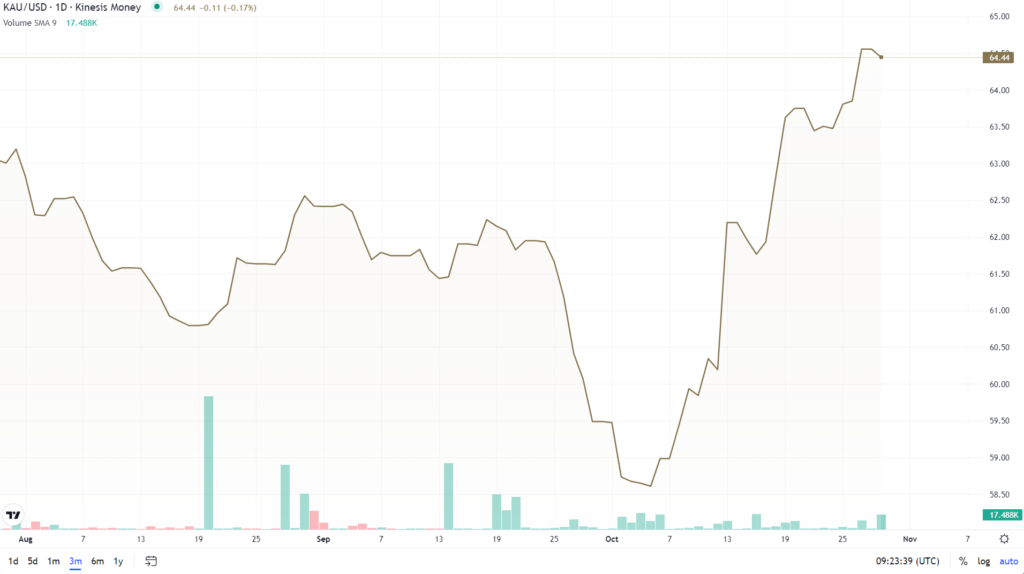Gold has started a new trading week trading close to $2,000 an ounce with safe haven demand still high as Israel begins to mount its ground invasion of Gaza.

This week is filled with central bank announcements with tomorrow bringing the Bank of Japan’s rate decision followed by the Federal Reserve on Wednesday and the Bank of England on Thursday. While all three central banks are expected to leave their interest rates unchanged, the continued reminder of their hawkish stance is likely to keep a lid on a gold price that is already at a very high level historically.
The huge increase in geopolitical tensions ever since Hamas killed Israeli citizens and the subsequent aggressive response by Israel will keep demand for safe haven assets, principally gold, supported for the foreseeable future with no quick end to the conflict in sight.
This safe haven demand is set against a macroeconomic climate that would otherwise be bearish for gold with interest rates set to remain higher for longer. As such, the next few weeks could see gold trade within a narrow range either side of $2,000 an ounce, depending on how the situation in Gaza unfolds.
Rupert is a Market Analyst for Kinesis Money, responsible for updating the community with insights and analysis on the gold and silver markets. He brings with him a breadth of experience in writing about energy and commodities having worked as an oil markets reporter and then precious metals reporter during the seven years he worked at Bloomberg News.
As well as market analysis, Rupert writes longer-form thought leadership pieces on topics ranging from carbon markets, the growth of renewable energy and the challenges of avoiding greenwash while investing sustainably.
This publication is for informational purposes only and is not intended to be a solicitation, offering or recommendation of any security, commodity, derivative, investment management service or advisory service and is not commodity trading advice. This publication does not intend to provide investment, tax or legal advice on either a general or specific basis.
Read our Editorial Guidelines here.



















